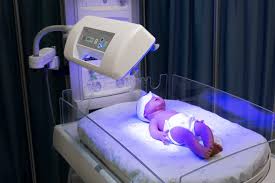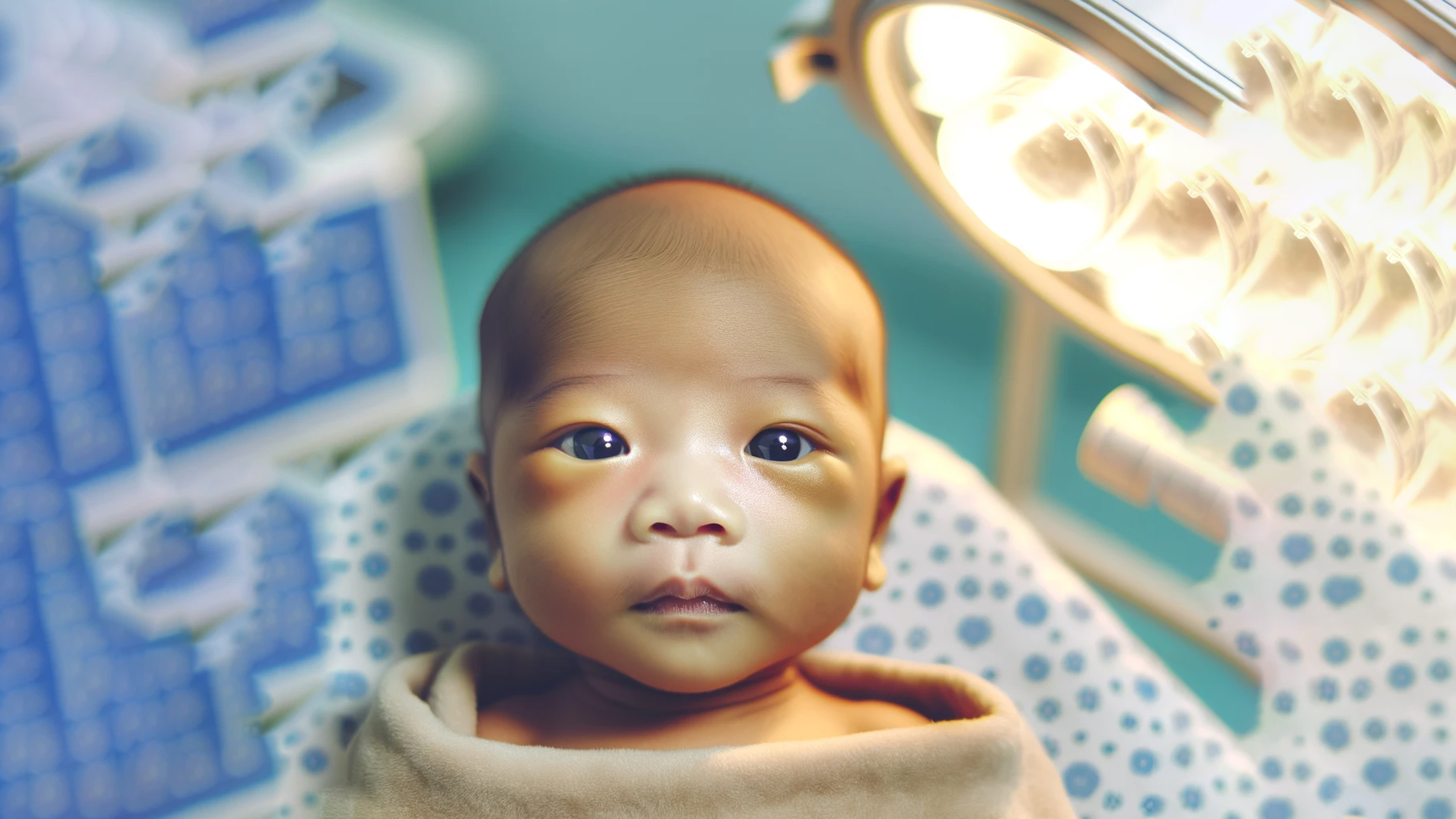Welcoming a baby to our house is a joyful moment for any family. Being a common problem jaundice is seen in most of the newborns characterized by having yellowish skin after birth. It usually resolves on its own without causing any harm to the baby. Understanding the causes and symptoms and knowing treatment options available for jaundice in newborns is essential for parents and caretakers of those newborns.
What is Jaundice in Newborns?
Jaundice in newborns, also referred to as neonatal jaundice, is a condition where the yellowing of a baby's skin and eyes is observed. This condition is observed when there is an accumulation of bilirubin, a yellow pigment produced during the breakdown of red blood cells, within the baby’s blood. This causes jaundice in newborns.
Causes of Jaundice in Newborns:
Several causes lead to jaundice in newborns, including:
Physiological Jaundice:
 It is found in a maximum number of people and the majority of people face this physiological jaundice, which occurs due to the immaturity of the liver and its inability to produce bilirubin inside the infant's body in the starting days of the newborn life. As a result, bilirubin levels increase in the body, it’s lead to jaundice. This jaundice is generally found between 2 to four days after birth and cures within one or two weeks as the baby's liver matures.
It is found in a maximum number of people and the majority of people face this physiological jaundice, which occurs due to the immaturity of the liver and its inability to produce bilirubin inside the infant's body in the starting days of the newborn life. As a result, bilirubin levels increase in the body, it’s lead to jaundice. This jaundice is generally found between 2 to four days after birth and cures within one or two weeks as the baby's liver matures.
Breastfeeding Jaundice:
Breastfeeding jaundice occurs when the baby is not able to get enough breast milk, leading to dehydration and reduced elimination of bilirubin through urine and stool. This type of jaundice can be seen in babies who have difficulty having breast milk in the starting days of life.
Breast Milk Jaundice:
Breast milk jaundice is seen as less common but jaundice takes place when certain components in breast milk interfere with the liver's ability to process bilirubin effectively.
This type of jaundice may live for a long number of weeks or even months and commonly short out on its own without causing any damage to the child's health.
Blood Group Incompatibility:
In a few cases jaundice in newborns may lead due to blood group incompatibilities between the mother and child, such as Rh or ABO blood group differences. This can cause the breakdown of red blood cells and an increased amount of bilirubin produced resulting in jaundice.
Infections or Other Medical Conditions:
In a few cases, sometimes jaundice in newborns can be caused due to medical conditions such as infections, liver problems, or metabolic troubles. These conditions require early diagnosis and proper treatment.
Symptoms of Jaundice in Newborns:
The most common sign of jaundice in newborns is the skin's yellowing and the eyes' whites. Other symptoms may also include:
Difficulty waking:
Jaundiced toddlers may be more sleepier and experience trouble waking for feedings.
Poor feeding:
Babies who suffer from jaundice inadequately feed less and have difficulty in latching.
Dark urine:
The babies who are affected by jaundice may experience darker urine color than normal color due to the presence of an excess amount of bilirubin.
Pale stools:
The stools of those jaundiced babies can be pale in color or sometimes clay-colored due to reduced bilirubin excretion through the digestive system.
Diagnosis and Treatment of Jaundice in Newborns:
If jaundice is diagnosed in a new child, doctors will carry out a physical examination and may also perform blood tests to check bilirubin levels. Treatment options for jaundice in newborns vary according to the severity and understanding of the cause. The common treatment procedures include:
Phototherapy:
 Phototherapy is the most common treatment for jaundice in newborns. It helps the exposure of the child's skin to light which helps to break down bilirubin which can be excreted from the body.
Phototherapy is the most common treatment for jaundice in newborns. It helps the exposure of the child's skin to light which helps to break down bilirubin which can be excreted from the body.
Increased Feeding:
For babies with breastfeeding jaundice, giving an increased amount of breast milk to those affected children can promote bilirubin excretion.
Formula Feeding:
In some cases of breastfeeding jaundice, doctors may also recommend supplementing breast milk through a formula that helps to treat jaundice by providing the babies with adequate vitamins and fluids.
Exchange Transfusion:
If there is found to be a severity of jaundice or due to blood group incompatibility transfusion may be important to replace the baby’s blood with a healthy blood group to lower bilirubin levels.
Prevention of Jaundice in Newborns:
jaundice in newborns can't always be prevented, there are steps mothers and family members can take to reduce the effect, risk, and severity of jaundice:
Regular Feeding:
 Newborns should be fed regularly in time to get rid of dehydration and reduce the risk of breastfeeding jaundice.
Newborns should be fed regularly in time to get rid of dehydration and reduce the risk of breastfeeding jaundice.
Observation:
Parents must always observe their newborns for signs of jaundice, which is followed by yellowing of the skin and eyes, and consult their doctor.
Regular check-ups and monitoring of the amount of bilirubin levels are necessary to reduce the risk of jaundice in newborns.
In conclusion, jaundice in newborns is very common and may occur due to increased bilirubin levels within the blood. While the majority of cases of jaundice are cured on their own, medical assistance and treatment may be needed for a few babies, particularly in cases of severe jaundice. By understanding the causes, signs, and treatment options available for jaundice in newborns, parents, and caretakers can take necessary steps to ensure the well-being of the baby with proper care.

